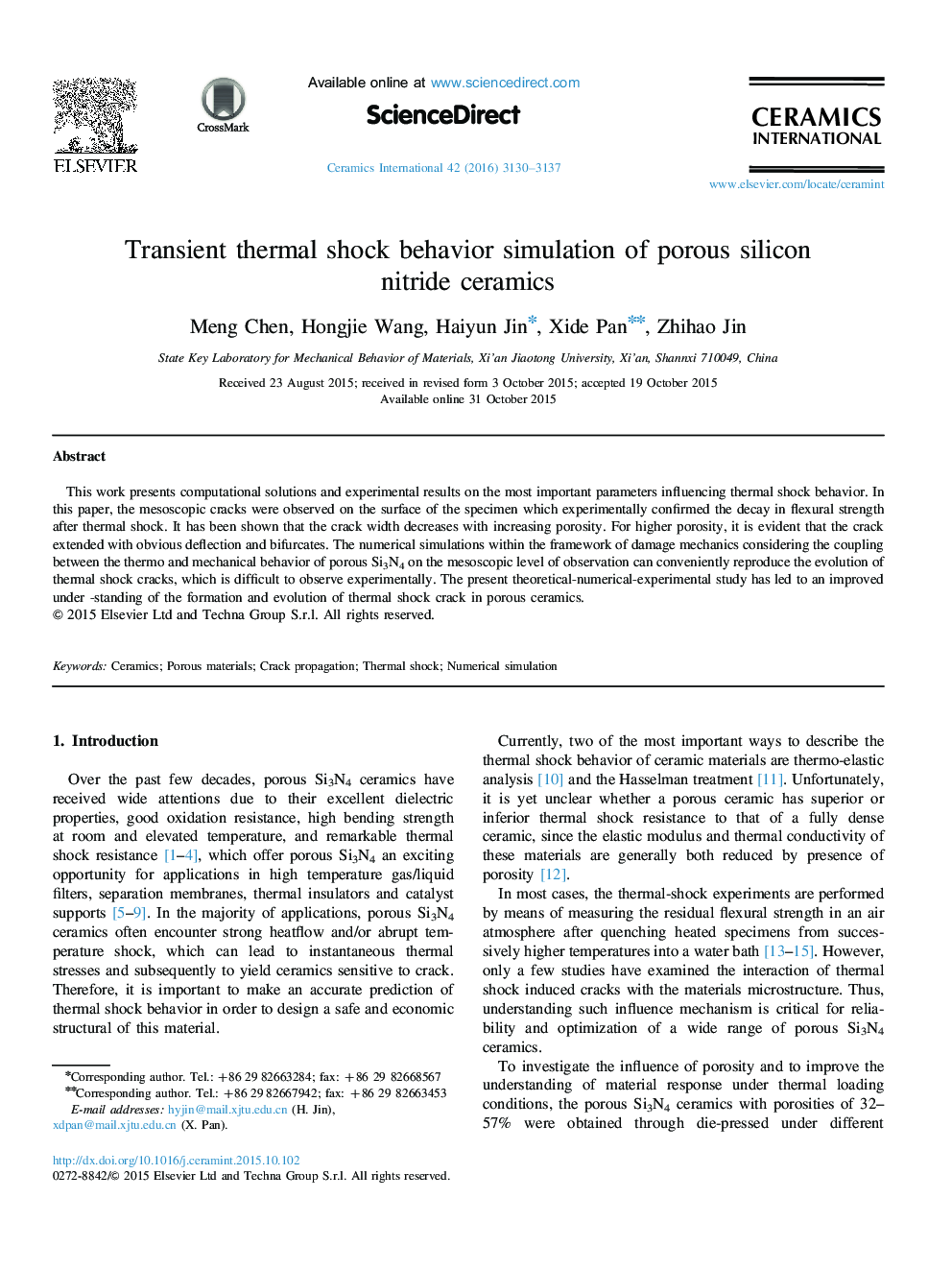| Article ID | Journal | Published Year | Pages | File Type |
|---|---|---|---|---|
| 1459530 | Ceramics International | 2016 | 8 Pages |
This work presents computational solutions and experimental results on the most important parameters influencing thermal shock behavior. In this paper, the mesoscopic cracks were observed on the surface of the specimen which experimentally confirmed the decay in flexural strength after thermal shock. It has been shown that the crack width decreases with increasing porosity. For higher porosity, it is evident that the crack extended with obvious deflection and bifurcates. The numerical simulations within the framework of damage mechanics considering the coupling between the thermo and mechanical behavior of porous Si3N4 on the mesoscopic level of observation can conveniently reproduce the evolution of thermal shock cracks, which is difficult to observe experimentally. The present theoretical-numerical-experimental study has led to an improved under -standing of the formation and evolution of thermal shock crack in porous ceramics.
